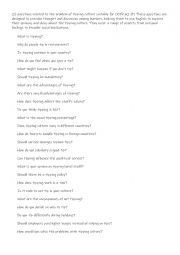
|
Tipping culture for CEFR A2-B1
25 questions related to the problem of tipping culture suitable for CEFR A2-B1 These questions are designed to provoke thought and discussion among learners, helping them to use English to express their opinions and ideas about the tipping culture. They cover a range of aspects from personal feelings to broader social implications.
Level: intermediate
Age: 15-100
Type:
Downloads: 123
|
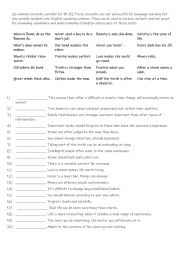
|
Match the proverbs to their meanings
20 common proverbs suitable for B1-B2.These proverbs are not only useful for language learning but also provide insights into English-speaking cultures. They can be used in various contexts and are great for expanding vocabulary and understanding of English expressions at these levels. Answers included on the following page.
Level: advanced
Age: 15-100
Type:
Downloads: 123
|
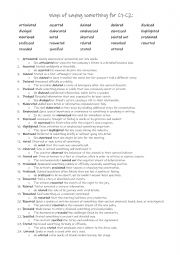
|
24 different ways of saying something for C1-C2
24 different ways of saying something for C1-C2 level. Pre-teach the vocabulary and then use page 2 which has all of the new words and a gap fill reinforcement activity. The answers are on page 3
Level: advanced
Age: 16-100
Type: worksheet
Downloads: 123
|
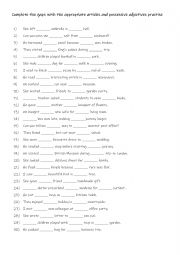
|
Complete the gaps with appropriate articles and possessive adjectives practise
Students read the sentences and decide what article is needed and what possessive adjective will complete the exercise. Answers on page 2.
Level: elementary
Age: 10-100
Type:
Downloads: 123
|
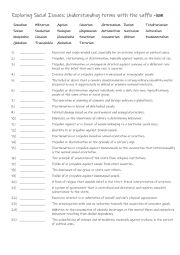
|
B1+ C1 Exploring Social Issues Understanding terms with the suffix -ism
Many "-isms" represent specific ideologies or belief systems (e.g., capitalism, socialism, feminism). Learning about these terms helps you understand the principles and ideas behind these ideologies, which are often significant in political, social, and philosophical discussions.Learning about "-isms" can broaden your intellectual horizons and deep...
Level: advanced
Age: 15-100
Type: worksheet
Downloads: 123
|
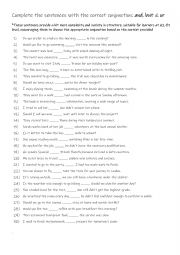
|
Complete the sentences with the correct conjunction: and, but & or
These sentences provide a bit more complexity and variety in structure, suitable for learners at A2-B1 level, encouraging them to choose the appropriate conjunction based on the context provided. Answers on page 2.
Level: intermediate
Age: 10-100
Type: worksheet
Downloads: 123
|
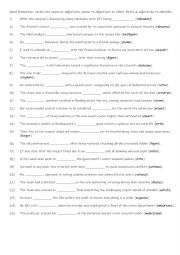
|
B1-B2 Word formation verbs into nouns or adjectives, nouns to adjectives or other forms & adjectives to adverbs
Students read the sentences and complete the gap-fill with the correct form of word in bold at the end of the sentence. Answers on page 2.
Level: intermediate
Age: 12-100
Type:
Downloads: 123
|
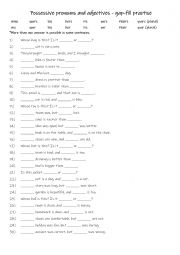
|
Possessive pronouns and adjectives - gap-fill practise
Students read the sentences and questions and complete it with the correct possessive pronoun or adjective. Answers on page 2.
Level: elementary
Age: 8-100
Type:
Downloads: 123
|
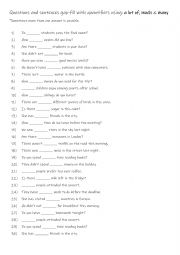
|
A1+-A2 Questions and sentences gap-fill with quantifiers using a lot of, much & many
Students complete the sentences using a suitable given quantifier in bold. Answers on page 2.
Level: elementary
Age: 8-100
Type:
Downloads: 123
|

|
A1+-A2 Questions and sentences gap-fill with quantifiers using a lot of, much & many
Students read the sentences to see which quantifier is required to complete the gap-fill. Answers on page 2.
Level: elementary
Age: 8-100
Type:
Downloads: 123
|












